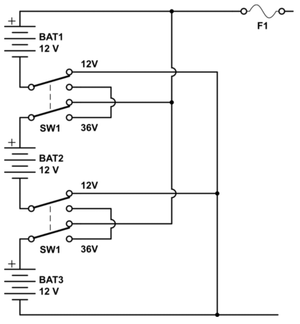I saw a computer last week that nearly made me cry.
This is an unusual reaction to a piece of technology, I know. Typical emotional responses in the computer business run a narrow gamut from detached interest to unbridled enthusiasm. Except for the occasional expression of disappointment over some product’s failure to live up to its promises, new technology most often evokes either jargon or expressions of sublimated sexual desire.
The eMate, however, is truly tragic technology. Only a year old, Apple’s eMate 300 — an unusual sort of laptop computer — was abandoned by the company last month at the same time Apple ditched its more famous older sibling, the Newton.
Of course, many other technology products with superior features, advanced technology or just plain good looks have also failed in the marketplace. Such failures typically evoke feelings of wistfulness or nostalgia among their fans: Witness Amiga users, devotees of vacuum-tube radios or Edsel drivers.
But the eMate is a different story: It barely even appeared in the marketplace. Commercials for the eMate never aired on television. Its distribution was mostly limited to primary and secondary schools. Toward the end of its life, the eMate appeared on some retail shelves, but even there it was hard to find. After its launch (to, as they say in the literary world, critical acclaim), Apple let the eMate founder through a year of obscurity, then pulled the plug. It never had a chance.
That’s too bad, because the eMate is a remarkable portable computer: It’s light, durable and cheap, and it’s a highly effective tool for writing and composing e-mail. Besides, it’s cute.
The eMate’s body is made of a dark blue-green, translucent plastic through which the circuit boards and internal components show dimly. In shape, it’s gratuitously curvy. When the lid is closed, you can pick it up by its built-in handle and tote it around with you like a satchel. Opened, it looks like a laptop the Jetsons would have used.
Notwithstanding its shape, the eMate is very functional. Under the hood, it’s based on the Newton operating system, which gives it Internet capabilities and some built-in applications. The screen is small but the keyboard is full-sized, and there’s plenty of room to rest your hands as you type. Or, if you prefer, you can draw and write on the screen with the stylus. It’s ready to use as soon as you open the lid (there’s no waiting for it to boot up or shut down). It’s an inviting, friendly looking object, approachable without appearing dumb.
Weighing only four pounds or so, the eMate seems strong enough to survive being dropped, banged into corners and otherwise roughly used. Since it has no energy-hungry moving parts like hard drives or fans, it can be used for a full day on a single battery charge. (Most laptops, by comparison, run for three to four hours at most.)
The eMate sold for less than $800 — half the price of Apple’s cheapest PowerBook laptops. Even Windows laptops can’t be had new for under $1,200.
So why was this product, which so elegantly addresses many of the shortcomings of traditional laptops — short battery life, fragility and beigeness — consigned to such a short life? Part of the explanation lies simply with Apple’s straitened circumstances; the company is slashing everything that’s not making money right now.
More significantly, the eMate failed because it was conceived as a product for the education market, and Apple never looked beyond that. The eMate’s design was based on the requirements of students and educators: It was made to be used by first- to 12th-graders — to be stashed in lockers, stuffed in backpacks and used on board the bus. It can exchange information wirelessly with other eMates, for classroom projects or for passing notes. It’s easy to use, and it looks cool.
But many of its schoolkid features also commend it admirably to portable computer users at large — something Apple never recognized. Without the company’s support, and without broad distribution and marketing, the eMate was consigned to obscurity. I never saw an advertisement for an eMate, and that’s a shame. Many people who would have used this computer simply never heard about it.
In some ways, the eMate’s fate is symptomatic of Apple’s troubles. The company has a history of launching innovative new technology and then letting it crash and burn — thanks to misguided or nonexistent marketing, an inability to meet demand, overpricing or pure shortsightedness.
When the Newton and eMate product lines were canceled, rumors had been circulating on the Internet about a “business eMate” in the works. If another company buys the rights to the eMate from Apple, we may yet see that rumored product, and maybe the new company will get it right this time. It’s also possible that Apple will release a version of the eMate based on the Macintosh operating system; the press release announcing the eMate’s demise promises that Apple “will be serving this market with Mac OS-based products beginning in 1999.”
But for now, the eMate is dead. As someone who loves computer technology and is excited about its potential to transform everyday life, I’m sad about that. Here was a computer that — unlike the forbidding, cranky and ubiquitous Compaq and Toshiba laptops — fit into our daily lives as comfortably as a Princess telephone. It’s a shame that the eMate never had a chance to ring its changes on our lives.
Link: eMate: Technology that never had a chance
Link broken? Try the Wayback Machine.

